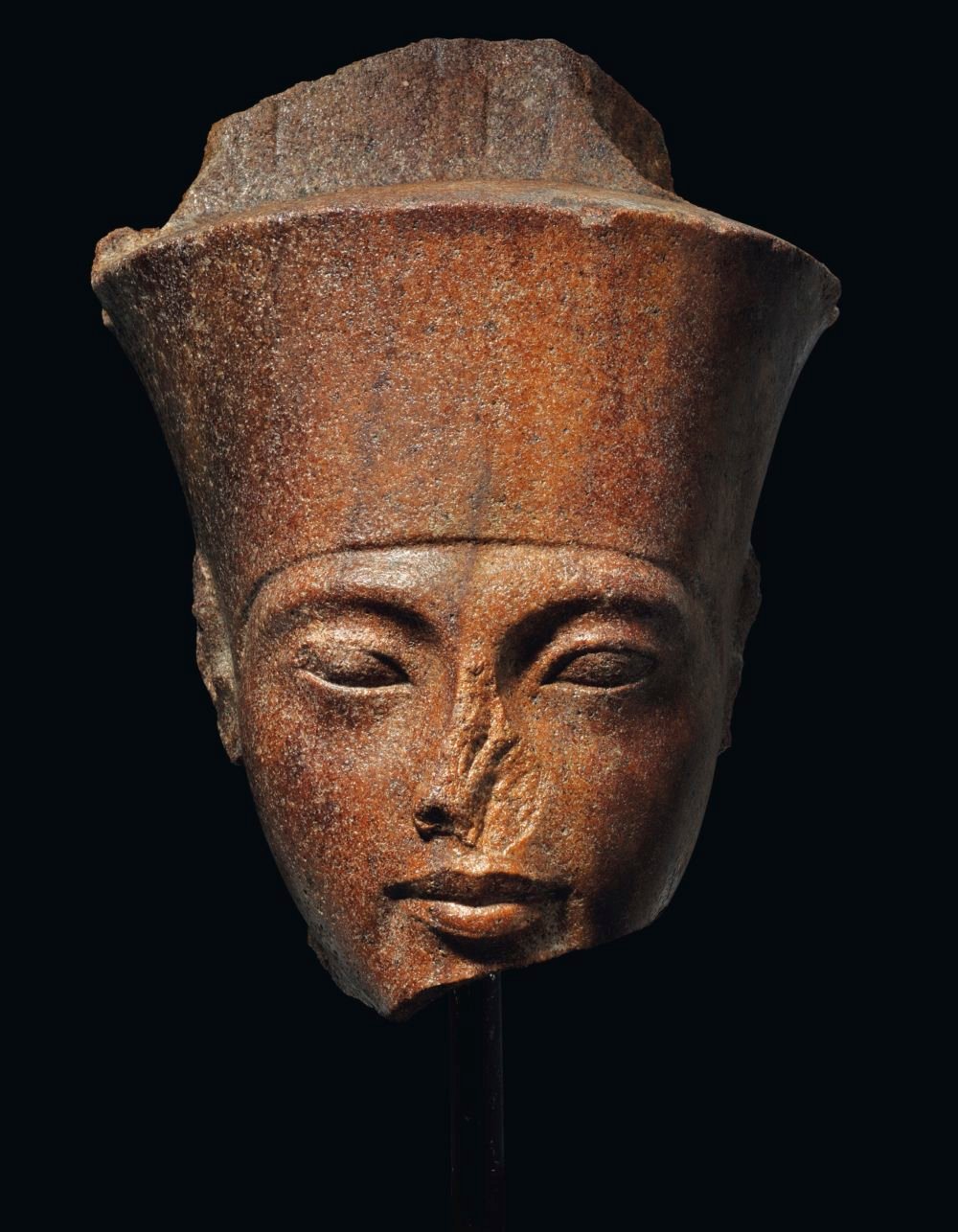
An unknown collector has bought a sculpture of the boy pharaoh Tutankhamun at Christie’s in London for just short of $6 million that is at the center of an international dispute. The controversial sale went ahead despite calls from Egypt to repatriate the 3,000-year-old artifact, and questions about its provenance.
The 11-inch-tall, brown quartzite head of the boy king portrayed as the god Amun sold last night, July 4, for £4,746,250 ($5.96 million) with fees. A small group of protesters gathered outside the auction house chanting: “Egyptian history is not for sale” as the controversial lot went under the hammer.
In an attempt to halt the auction, London-based Egyptian representatives had written to the British government, UNESCO, and Christie’s calling for the sale to be stopped, according to Agence France Presse. The Egyptian foreign ministry had also reportedly requested that all items from Egypt in Christie’s auctions this week be removed until the auction house could provide proof of “valid ownership certificates.”
The Egyptian head of the god Amun with features of the Pharaoh Tutankhamen (around 1333-1323 B.C.) Photo courtesy of Christie’s.
When the controversy over the sale first boiled over, a spokesperson from Christie’s told artnet News: “[It] is hugely important to establish recent ownership and legal right to sell, which we have clearly done. We would not offer for sale any object where there was concern over ownership or export.” Critics have questioned its due diligence, however.
The high-profile archaeologist Zahi Hawass, who is Egypt’s former antiquities minister, has spoken out against the sale. “We think [the sculpture] left Egypt after 1970 because in that time other artifacts were stolen from Karnak Temple,” he told AFP news agency. “I don’t think Christie’s have the papers to show it left Egypt legally; it’s impossible.”
The statue was part of the Resandro Collection, a private German collection of Egyptian art, part of which has been sold at Christie’s in the past. The head had been acquired from a Munich-based dealer, Heinz Herzer, in 1985. Previously it was in the collection of Prinz Wilhelm von Thurn und Taxis. Christie’s press release states that the prince “reputedly had it in his collection by the 1960s,” but Egyptian authorities have been challenging the legitimacy of this claim.
Christie’s statement on the sale seemed to indirectly acknowledge the controversy: “We recognize that historic objects can raise complex discussions about the past; yet our role today is to work to continue to provide a transparent, legitimate marketplace upholding the highest standards for the transfer of objects.” The company added: “We believe it is in the public interest that works come out into the open with the opportunity for them to be researched.”
Around 15 protesters gathered in the street outside Christie’s to oppose the sale, according the The Art Newspaper. “The primary reason we are protesting is because this is a private sale. I don’t mind seeing artifacts from Egypt in other museums. I don’t even mind most Egyptian artifacts being in British museums as long as they are able to be viewed by everyone,” said one demonstrator.